Archive
Schimmel’s Wedding Film 1948
- Film
Schimmel’s Wedding Film 1948
Word Count: 4
- 30-03-1948
Silent film; compilation of amateur videos; partly colour, partly black-white
Glamis Villa, off Warden Road, near Breach Candy Club, Bombay (now 63 Bhulabhai Desai Road, Cumballahill, Mumbai) (Venue of wedding ceremony & garden reception); The Taj Mahal Palace Hotel, Apollo Bandar, Colaba, Bombay (now Mumbai), (Venue of wedding lunch); Keneseth Eliyahoo, Fort Synagogue, Forbes Street, Fort, Bombay (now Keneseth Eliyahoo Synagogue, 55, Dr. V.B. Gandhi Marg, Fort, Mumbai) (synagogue of the rabbi who performed the wedding, see wedding certificate; 16.4).
9 min 37 sec film (11 shots)
- Mumbai (IN)
The film shows Schimmel’s Jewish wedding ceremony at the prestigious Glamis Villa, followed by lunch at the Taj Mahal Hotel. Among the guests were Käthe and Walter Langhammer.
Word Count: 30
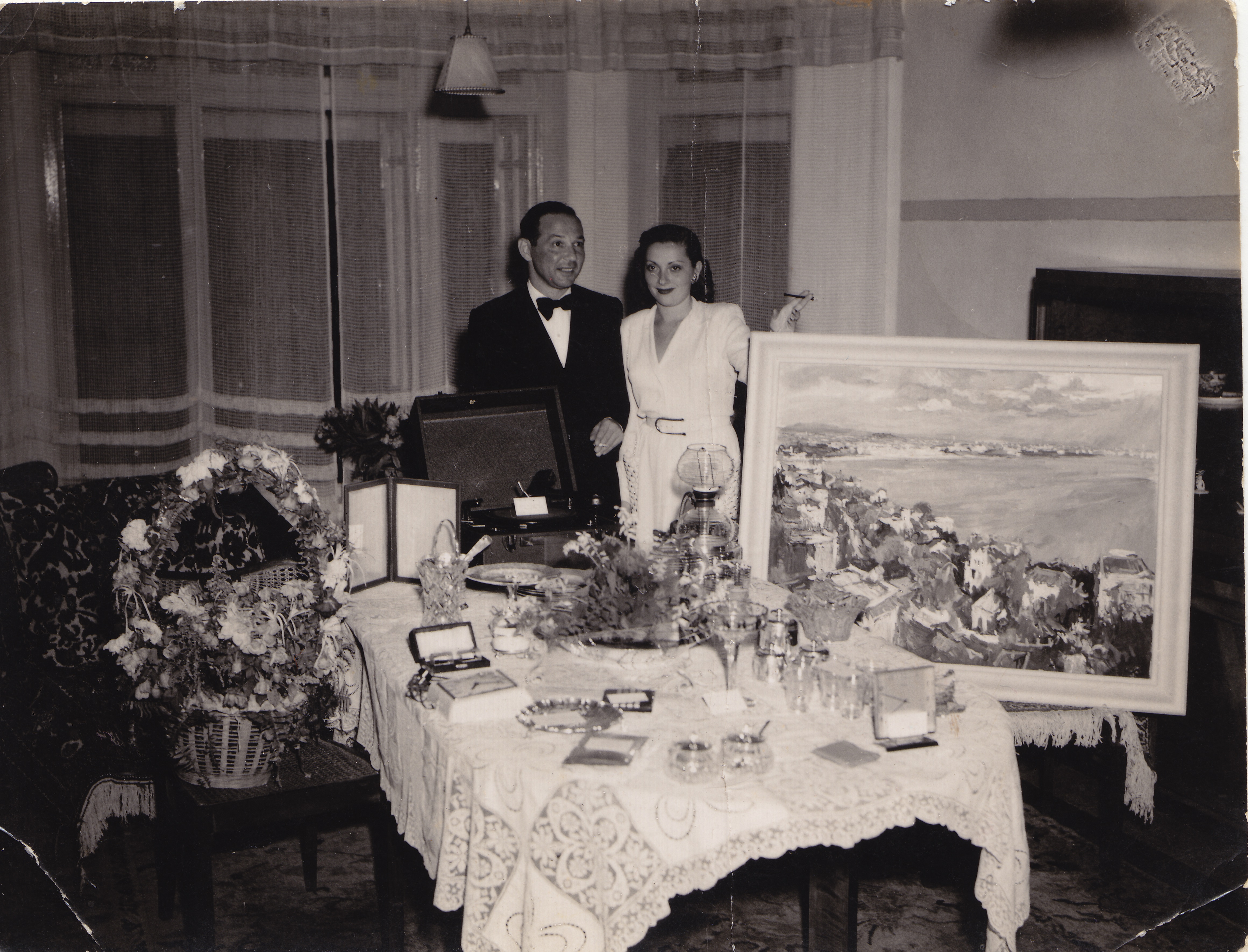
Photo of the newlyweds with wedding gifts, including the Langhammer painting Bombay from the Malabar Hills in the dining room of Glamis Villa, 1948 (© Private Archive Joe Schimmel, Cape Town). 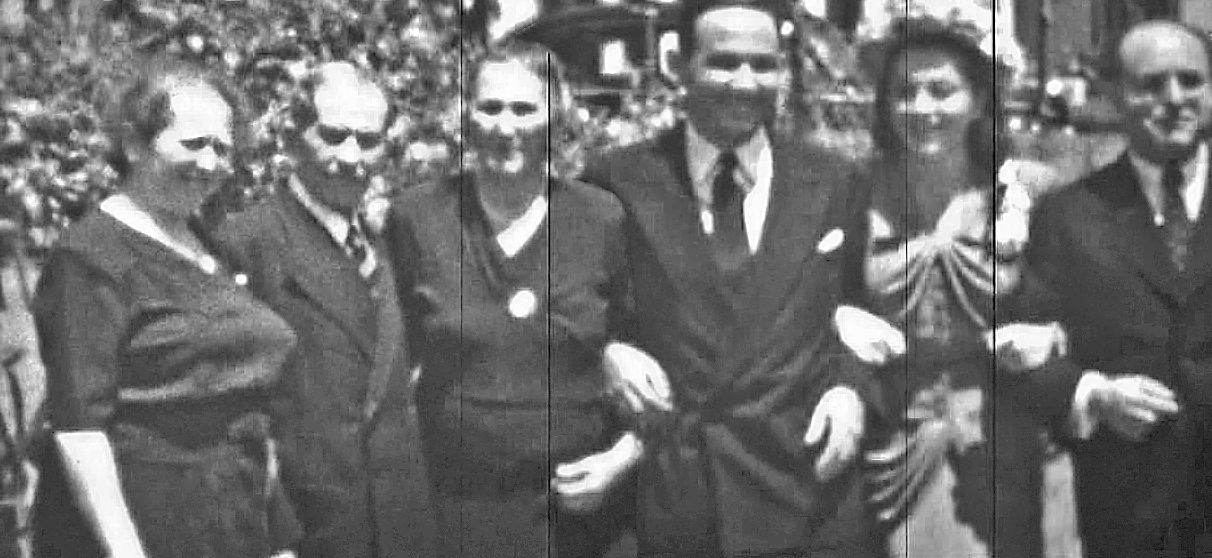
Joe Schimmel’s family during the wedding. From left: Kamilla Thenen (groom’s cousin), Adolf and Klara Schimmel (groom’s parents), the groom Joe Schimmel, the bride Eva Ormos and Julius Thenen, 1948 (© Private Archive Joe Schimmel, Cape Town; photo montage from the film by Fredi Kuncio). 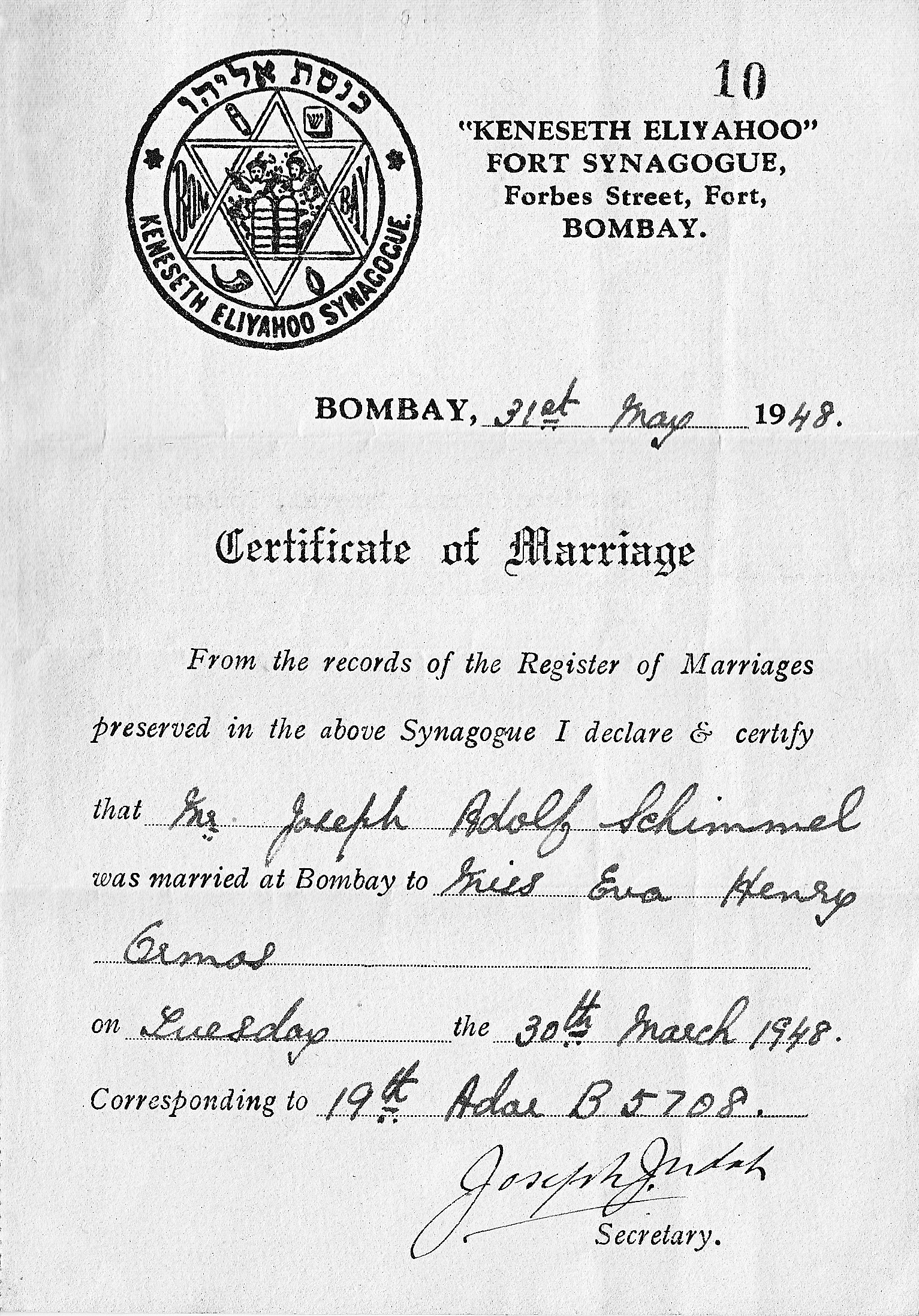
The Marriage Certificate from the Keneseth Eliyahoo Fort Synagogue, 1948 (© Private Archive Joe Schimmel, Cape Town). 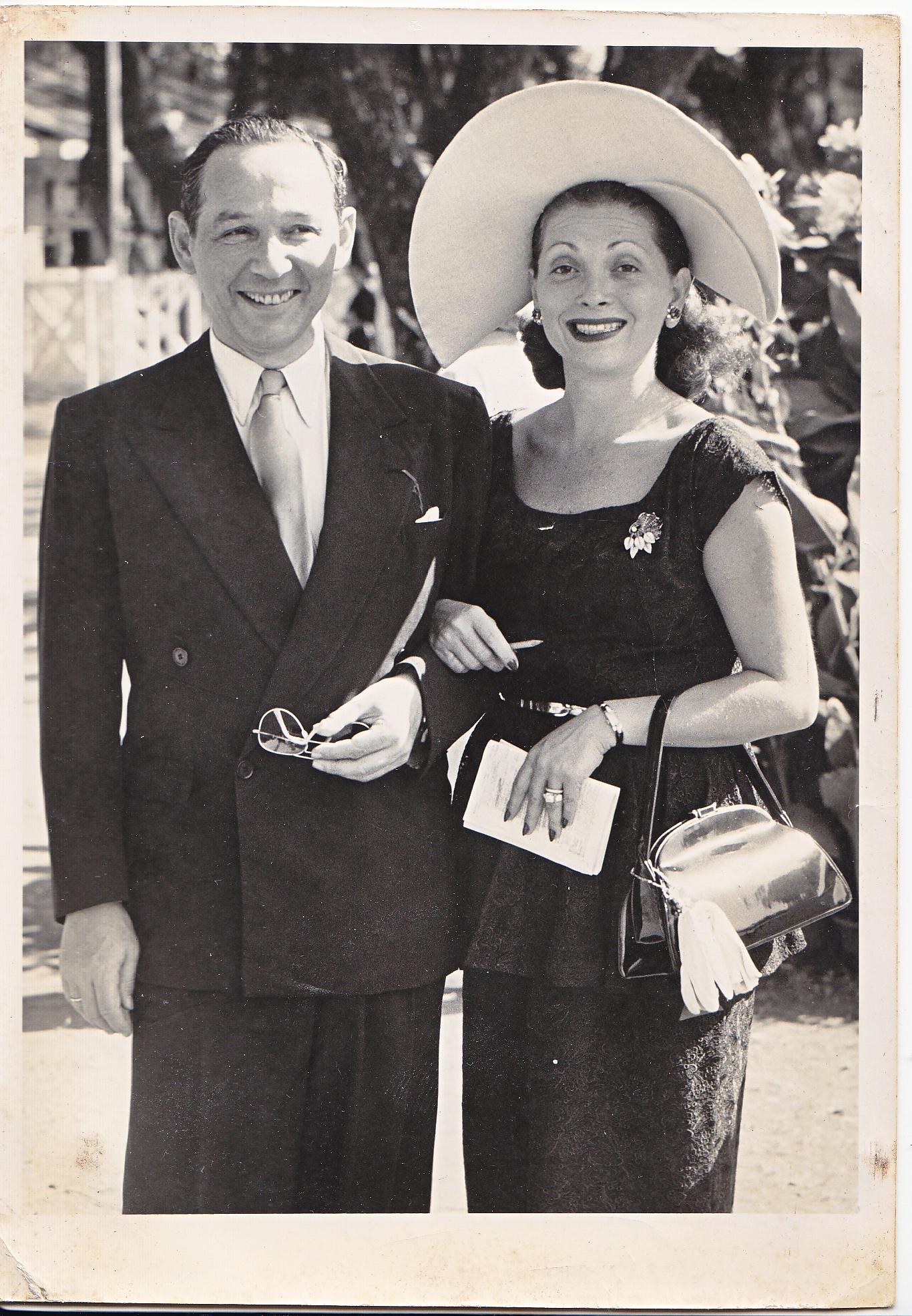
The Schimmels at the Bombay Race Course in high society Bombay, late 1940s (© Private Archive Joe Schimmel, Cape Town). 
The Schimmel couple on vacation in Bad Gastein, Austria, 1951 (© Private Archive Joe Schimmel, Cape Town). 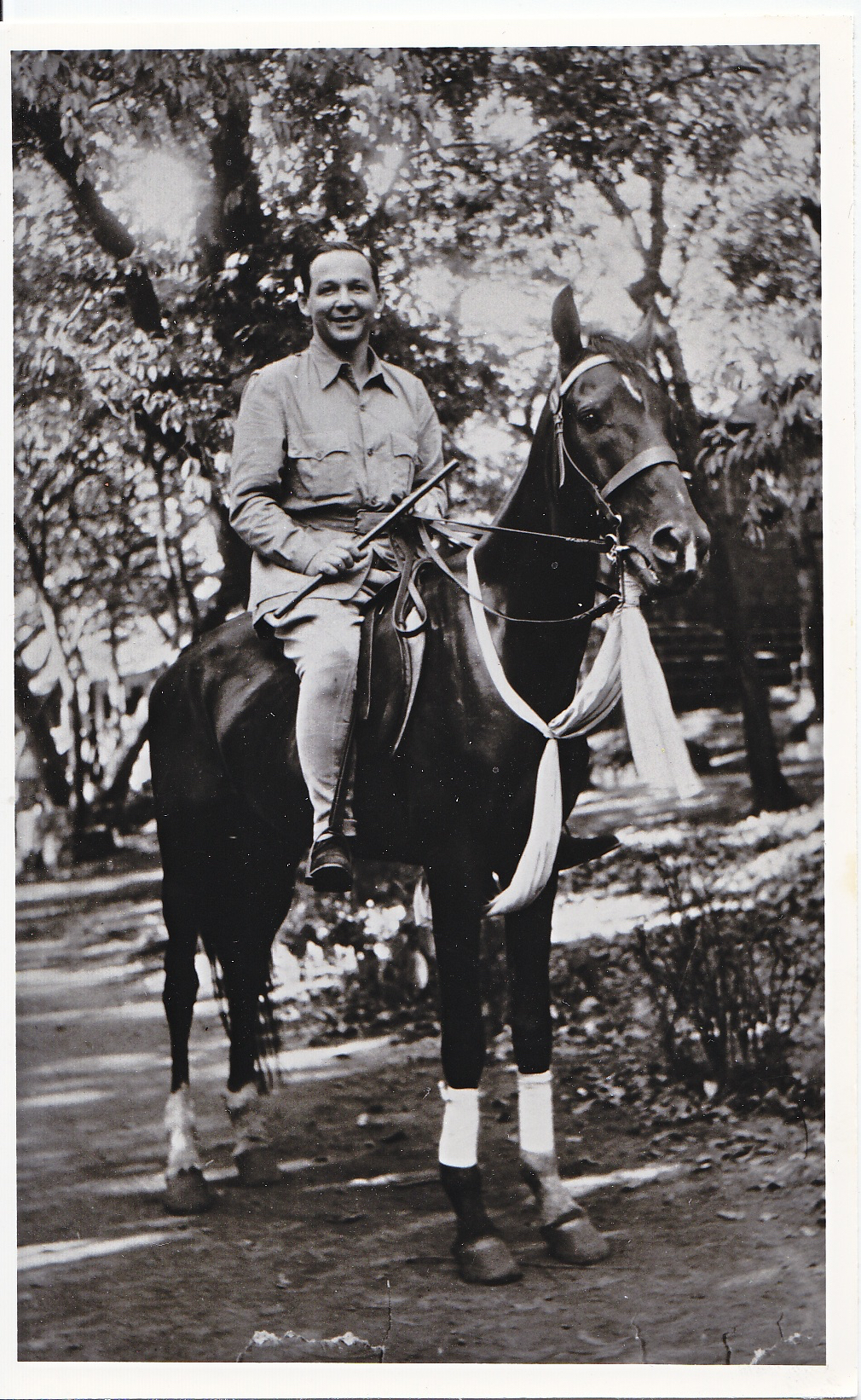
Stallion belonging to Joe Schimmel, before 1948 (© Private Archive Joe Schimmel, Cape Town). 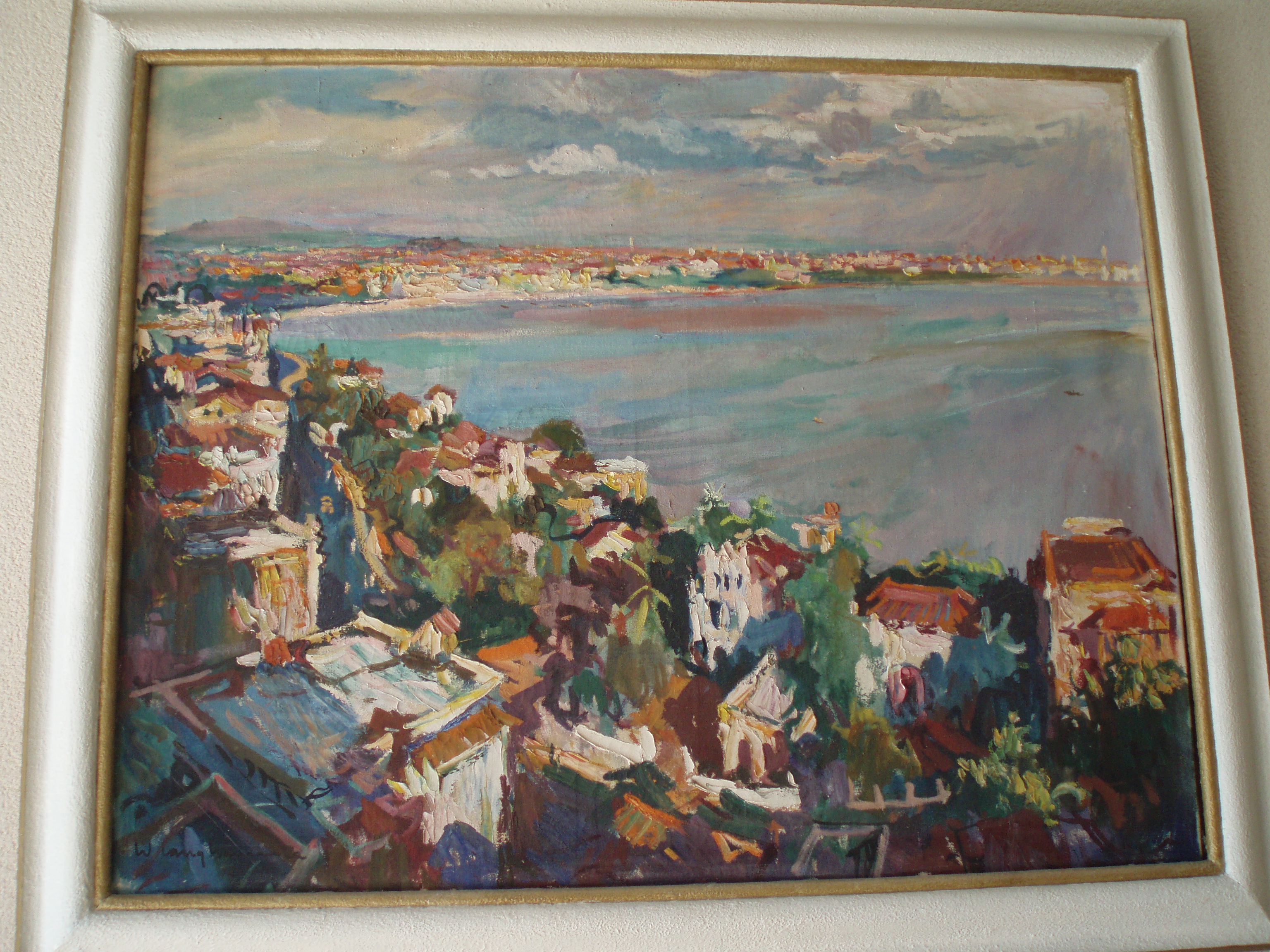
Langhammer's painting Bombay from the Malabar Hills, n.d. (Photo: Margit Franz, 2010). Schimmel’s wedding film, 1948 (© Private Archive Joe Schimmel, Cape Town; revisions, technical adaptations and simplifications by Martin Schitter; entire film on Vimeo, see link below). Anonymous. “Bombay Wedding.” The Times of India, 31 March 1948, p. 9.
Bharucha, Nauzer K. “Industrialist buys heritage south Mumbai bungalow for RS 180cr.” The Times of India, 1 November 2013, timesofindia.indiatimes.com/city/mumbai/industrialist-buys-heritage-south-mumbai-bungalow-for-rs-180cr/articleshow/25029004.cms. Accessed 13 April 2021.
Franz, Margit. Gateway India. Deutschsprachiges Exil in Indien zwischen britischer Kolonialherrschaft, Maharadschas und Gandhi. CLIO, 2015.
Franz, Margit. “From Dinner Parties to Galleries: The Langhammer-Leyden-Schlesinger Circle in Bombay – 1940s through the 1950s.” Arrival Cities. Migrating Artists and New Metropolitan Topographies in the 20th Century, edited by Burcu Dogramaci et al., Leuven University Press, 2020, pp. 73–90. Project Muse, doi: 10.1353/book.77990. Accessed 30 March 2021.
Gandhy, Kekoo. “The Beginnings of the Art Movement.” City of Dreams, special issue of Seminar, no. 528, August 2003, www.india-seminar.com/2003/528.htm. Accessed 10 April 2021.
Wikipedia, the free encyclopedia. “Glamis Castle.” 22 April 2021, Wikipedia, en.wikipedia.org/wiki/Glamis_Castle. Accessed 25 April 2021.
Word Count: 135
Private Archive James von Leyden, Lewes.
Archival records from personal interviews between the author and Carol Ross, Néré, France, 20–24 August 2010.
Archival records from personal interviews between the author and Khorshed and Kekoo Gandhy, Mumbai, 30 April to 3 May 2003; 18 to 22 January 2004; 26 April to 12 May 2007; 13 to 15 October 2008; 24 October 2010.
Private Archive Joe Schimmel, Cape Town.
Private Archive Margit Franz, Sinabelkirchen.
Private Archive of late Khorshed & Kekoo Gandhy, Mumbai.
Word Count: 66
- Bombay
- Margit Franz. "Schimmel’s Wedding Film 1948." METROMOD Archive, 2021, https://archive.metromod.net/viewer.p/69/2951/object/5140-11945042, last modified: 22-11-2021.
-
Emanuel SchlesingerFactory OwnerTechnical DirectorArt CollectorArt CriticBombay
The art collector Schlesinger provided primarily financial aid by creating working opportunities for young artists in post-independence Bombay, and initiated the corporate culture of buying art.
Word Count: 26
Baumgartner’s BombayBookBombayThe novel Baumgartner’s Bombay provides an opposite picture to that of the successful refugee in Bombay. Anita Desai’s fiction depicts poverty and failure in Indian exile.
Word Count: 28
ChemouldGalleryFrame ShopBombayChemould’s history stretches from its beginnings as a manufacturer of chemical mouldings and frames in 1941 over to a hub for art circulation displaying a variety of artists in Bombay.
Word Count: 30
Breach Candy ClubClubBombayThe Breach Candy Club, restricted to “Europeans”, was a favourite spot for the exiled financial elite with its saltwater pool shaped like the map of British India and sea view.
Word Count: 30
Kekoo Minochair GandhyFrame Shop OwnerGalleristArt CollectorBombayStarting from a cosmopolitan milieu for young local artists, Kekoo and his wife Khorshed Gandhy developed a business model that turned the frame shop into Gallery Chemould.
Word Count: 27
Rudolf von LeydenGeologistAdvertisement SpecialistJournalistArt CriticArt CollectorCartoonistBombayThe advertisement expert, Rudolf von Leyden, became a major art critic and art historian in Bombay in the 1940s, advocating an urgent need for modernism in art in post-colonial India.
Word Count: 30
The Leydens: Sculpture, Paintings, CartoonsExhibitionBombayIn 1948 Albrecht and Rudi von Leyden sold their personal works of art in order to set up an “Artists' Aid Fund”, which became an institution in the following years.
Word Count: 29
Open Studio Evenings by Käthe and Walter LanghammerSalonBombayThe painter Walter Langhammer and his wife Käthe built an informal infrastructure to promote local avant-garde artists and regularly invited them to Open Studio Evenings at their studio.
Word Count: 29